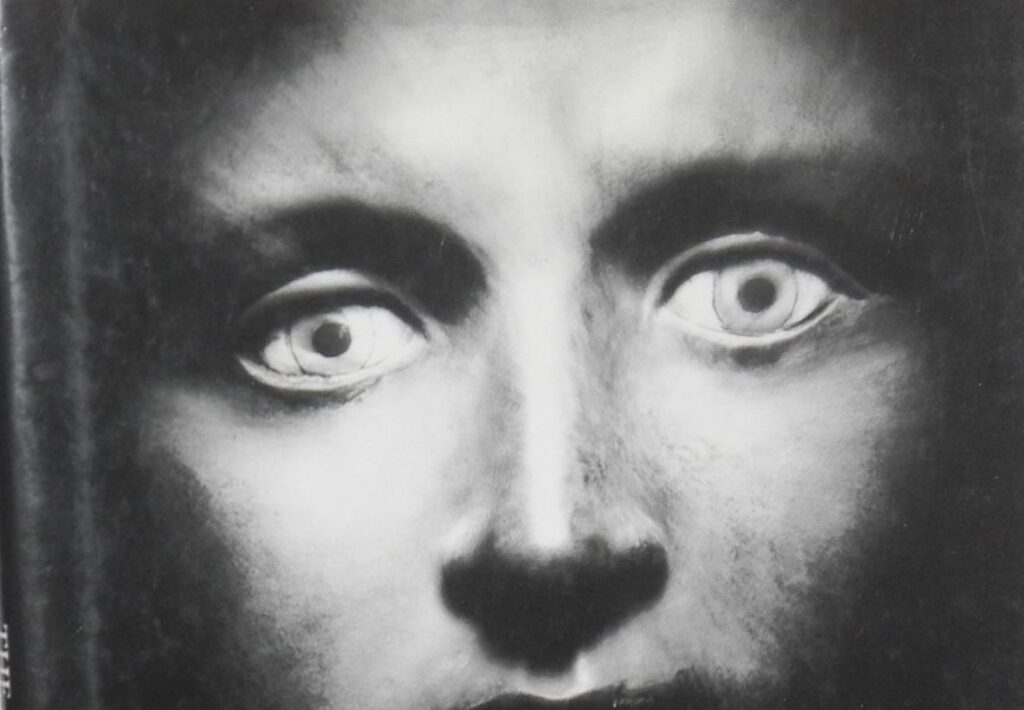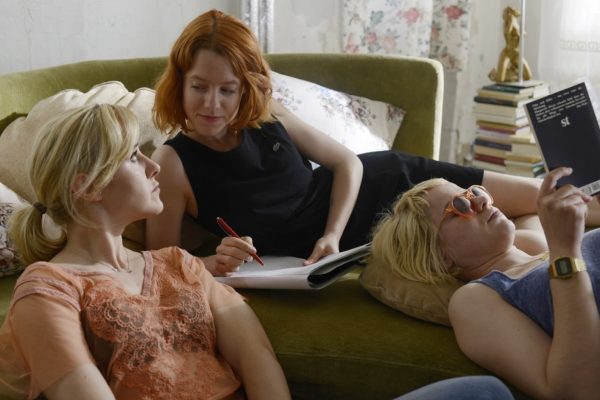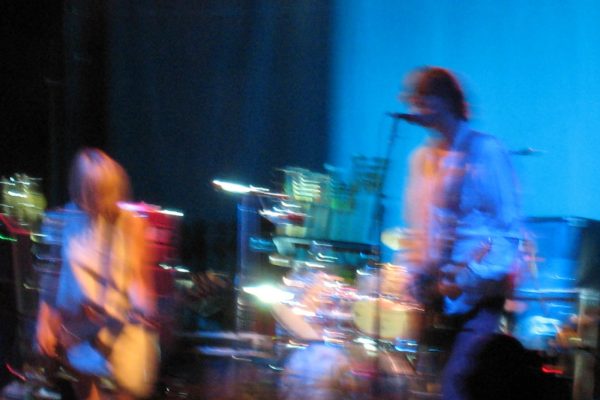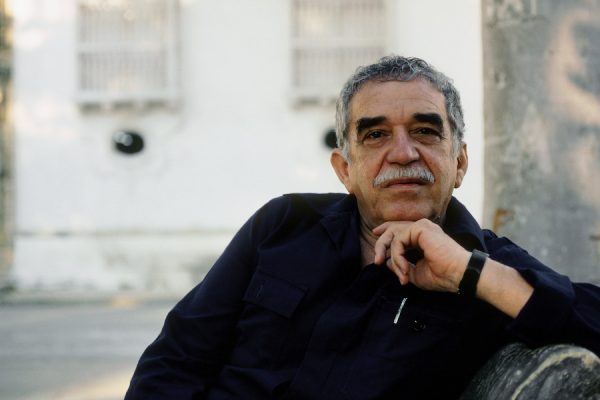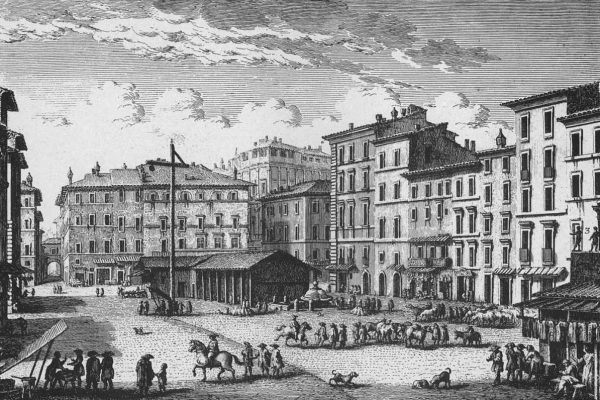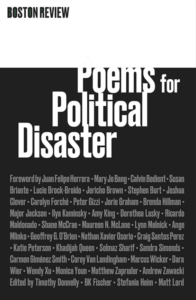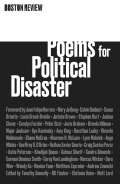Mark Wunderlich’s most noteworthy subject matter–the play of desire and identity in contemporary urban gay life–is engaging and, even in our soi-disant “multicultural” era, not much explored in its specifics. The cityscape of bars, bathhouses, and backrooms, clubs and one-night stands that much of his work traverses is well evoked. He is excellent at conjuring the fantasies and mythologies we urban (or in my case, formerly urban) gay men often weave around our temporary sexual encounters, in anticipation and in retrospect. The poems that deal with more commonly treated material–growing up in the landscapes of a seemingly timeless American heartland defined as the antipode of the urban or even the contemporary–tend to blur into many other such poems in what has become a major content genre of American poetry. Though he is clearly a stylistic and thematic follower of Mark Doty, Wunderlich hasn’t mastered Doty’s knack for weaving together significant detail and lush description into architectonic wholes, nor has he tuned his ear as well as Doty has. Wunderlich’s poems are accomplished, and often interesting, narrations, but the “poetry” too often seems glued on or forced.
Oddly enough, the prose poems that make up the third section of The Anchorage are the most linguistically lively and imagistically vivid pieces in the book. Their imaginative reach is wider, their focus less strictly personal. Perhaps working without the apparent certainties of line and stanza forces Wunderlich to rely on the words themselves to make the pieces into poems. They abound in lovely passages like the description of the uncorrupted corpse of a French saint in “Chapel of the Miraculous Medal”–“The nun stubbornly holds on to form, waxy hands clasped over her heart, an insect in amber”–or the following lines from “No Place Like Home”: “In rest stops all across America, men wait in cars for sex to happen to them, the burning cities of their radios glowing, the voices ringing out like instructions for a new route home.”
Wunderlich too frequently affixes figures onto scenes or descriptions regardless of their accuracy, as in these lines about a drag queen’s “elaborate wig / jangling like bells on a Shinto temple.” A similar reluctance to let an image stand alone is seen in the lines “White snowy pullets in the yard flare up / into white fires, you roost there, a jewel at the throat, a sad thing.” He is also fond of ending poems with grand metaphorical gestures, epiphanies whose elements don’t quite add up. At the end of “Cease, the Heart is With Me,” he compares St. Sebastian pierced with arrows to a young man “climaxing” in a porno magazine:
How does the image of spilled semen correspond to the image of arrows piercing flesh (the direction of motion is exactly contrary, nor is semen a singular sharp object like an arrow), and how are the residue of sexual pleasure and the instruments of martyrdom equally things to be “forgiven”? At the end of “Peonies,” Wunderlich writes:
While I appreciate the sound play of “infant” and “infinity,” I fail again to see how these seemingly randomly listed (and mostly abstract) elements correspond to one another. Indeed, a shell and a heaven (one an enclosed space, one an unbounded expanse) seem opposites, as do an infinity and an end.
I don’t want to appear too harsh in my judgment of Wunderlich’s work. I have dwelled perhaps too long on its shortcomings because I feel I must justify my tepid response to what many will see as fine, moving poems. His talent is genuine and obvious, I just wish there were less will to move the reader and more will to make coherent aesthetic objects.
Dana Levin’s In the Surgical Theatre, as it title might indicate, organizes itself around a primal scene of bodily violation that is also resuscitation, bodily rescue that is also violation. A six-day-old infant is operated on to remove an internal rot with which it apparently was born:
The poems of the first section rehearse this scene again and again, from different angles and perspectives: sometimes an I, sometimes a you; more literally and then more metaphorically: in “The Baby on the Table,” the scene is a “poor black and white print of a nameless Adoration / by the School of Jan-Stephan Von Calcar”; in “Personal History,” the rotten intestines are the lianas of a steaming Vietnamese jungle during the war. The adult poet wears the x-shaped scar (or, given her repeated invocation of angels, perhaps it is cross-shaped) as a reminder of the presence of death and decay at the incipience, of consciousness’s grounding in the fragile yet resilient physical body:
The poems become that scar; they are both the wound and the healing over of the wound. As if to press the point home that everything begins in the flesh, the first section of the book is entitled “Body,” followed perhaps a bit too neatly by “Home” and “World.” Body looms large in these poems, the stink and reek of it, the whole body defined as that which has not yet wounded or that which is recovering from being wounded. Even the soul is “that cramped dark thing, / in the body / bitten and chained.”
Levin’s work is phenomenological; it details how it feels to be an embodied consciousness making its way through the world: the I casting itself outward by means of the eye (from “Field”):
It seems clear that what’s coming in this passage is the world itself, across the distance, through the window that is (even etymologically) another eye. Just as in the book’s primal scene, the world is not passive, but casts itself toward the I/eye as much as the I/eye casts itself out into the world. This is perhaps why wind is such a pervasive figure in these poems, wind that is both palpable and incorporeal, a force without necessarily being a thing, something happening that is also the means by which other things happen. There is the wind to which a wheelchair-bound acquaintance gives himself up (“I am a kite, I am a bird, I am weightless … I am wholly mind, wholly air”), “the rush of wings / stirring a wind” of the ministering angels (both doctors and watching the doctors) at the infant’s surgery, the abusive father who is a storm wind that tears and strips but never uproots (“And then we were in the cellar, / in the darkness with the jam jars, / while he roared and tore past our doors”), the wind that brings in the world in the passage quoted above.
When Levin moves away from the immediacy (including the immediacy of association and reverie) of the I/eye, missteps like “Bathhouse, 1980” (the book’s “AIDS poem”) occur. Perhaps because it is, as its second line indicates, seen “through Richard’s eyes,” a vicarious representation of another’s bodily experience (a gay male friend’s), the poem feels voyeuristic and sensationalized: Levin’s eye/I cannot vouch for what it has not seen. But on the basis of what she has seen, she is capable of leaps that encompass America itself:
While subject looms large (but differently) in both Wunderlich’s and Levin’s poems, the question of subject is almost irrelevant to Brenda Shaughnessy’s. This makes her poems–delights to read and to immerse oneself in–more difficult to discuss than those of more obviously thematic poets. The poems in Interior with Sudden Joy read like those experiences that one is certain one has undergone, but one cannot always say–even to oneself–what they might “mean.” I find myself reduced to pointing out striking features of the poetic landscape she allows me temporarily to inhabit: look at that, and don’t miss this. But then, as she puts it in her revisionist way, “everything is only / nothing, truncated.”
One of Shaughnessy’s primary topics is love, but she is as much in love with language as with her beloved, intoxicated with what love lets her say, with the language love brings her. Words are her true beloved, and she never resists their blandishments: “Used / and fueling, a succubus cannot ruin what she pulls / on her tricky leash: dread’s body, desire’s body.” Hers is not a poetry of great depth, but its surfaces are brilliant, almost blindingly so. To quote a passage, from “Letter to the Crevice Novice,” that echoes my own words on her work:
At times there is an over-straining for the quirky or the idiosyncratic (“We’re awake / each night at pennymoon and we micro and necro”); at times the lines are a bit cute or overly whimsical (“You my fat bad fricassee” or “It would kill her if you were ewe gee ell why”); at times her gestures recall or follow too closely after those of her teacher and mentor Lucie Brock-Broido (“Witch’s / book of vim and bliss”). But the talent and the passion (for words, of words) in these poems is undeniable. “Who wants pretty, when pretty is plain / and the heart is gnarled and the fullsacked / forest of being lost is home?” The beauty in Shaughnessy’s poems is rarely reducible to the pretty: gnarled and haunted, it is a “scarlet / fabric woven by apprentices whose fingers / are sad and large with the work of beginning.”
To make an assertion that may have become cliché by now, most of today’s most interesting new poets are women, many of them self-consciously (if not adamantly) daughters of Emily Dickinson. Among Shaughnessy’s coevals are Mary Jo Bang, Michelle Glazer, Claudia Keelan, Laura Mullen, Amy Newman, Tracy Philpot, Heather Ramsdell, and Karen Volkman, to name (in hopefully uncontroversial alphabetical order) only a handful of those who have published books in the past few years. What these poets share, besides an interest in the phenomenology of love and a fascination with the mechanics and mistakes of perception, is a passion for language at least at great as a passion for any topic to which language might address its attentions, and a singing line at times reminiscent of Elizabethans like Campion, for whom love and music were one. W. H. Auden said long ago that he trusted a poet who wanted to eavesdrop on what words say to one another more than a poet who had something to say. “Would I dance with you? Both forever and rather die. / It would be like dying, yes. Yes, I would.” Brenda Shaughnessy has overheard some fascinating words, and I am happy she has chosen to share them with us. “Through a thousand panes of glass // not at all transparent, and the temperature. I felt that. What you say is not less than that.”
